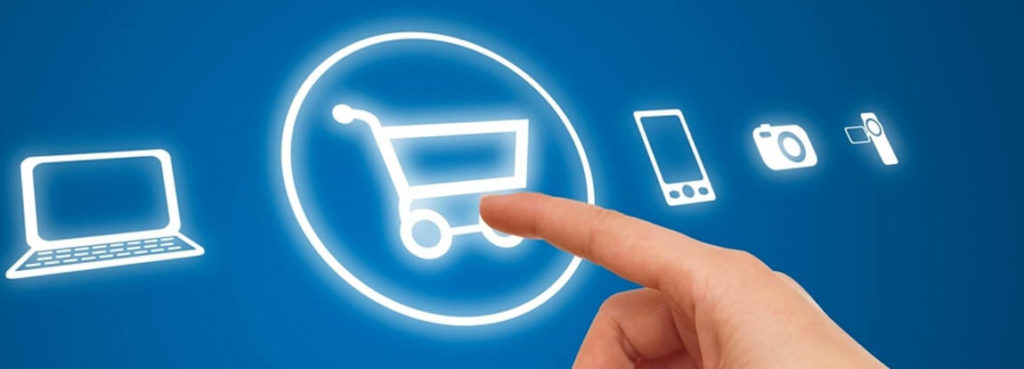OK, so maybe you don’t have to let go of a direct-to-consumer sales strategy entirely. Obviously, there will always be customers who prefer to buy directly from the source (your brand). Not to mention many brands have been D2C for most of their time in existence.
But sticking too rigidly to one way of doing business can just as easily become a liability for many brands, and the reason is simple: omnichannel buying opportunities.
Retail – in e-commerce and in brick-and-mortar stores – is more competitive than ever thanks to rapidly transforming business models that marry online and in-store purchasing. While some organizations will be able to respond to these new demands and still fully maintain their D2C status, just as many, if not more, will struggle to compete with some of the big-name innovators in the space. In other words, brand manufacturers must be wary of clinging dogmatically to D2C. Contrary to the idea that direct sales will beef up profit margins, failure to accommodate a diverse enough customer base will ultimately slash sales numbers.
The on-demand economy is here
“Brands must use their availability across different retail channels as an advantage.”
By the end of 2017, the total transaction value generated from the on-demand economy will reach $57 billion according to Inc. contributor James Paine. Bear in mind that this is compared to $22 billion in 2015 and $34 billion in 2016. These massive revenues will be fueled in part by innovative models such as those put forth by Uber, but also by more established players. Case in point, Amazon’s U.S. online sales for 2016 grew more than all of the other market players combined, according to the Motley Fool.
So what about Amazon is on-demand? For one, it’s Dash buttons. Once a nifty concept with limited utility, Amazon now has Dash buttons for a variety of different brand-name products. These include everything from razors to toothpastes to coffee to allergy medications and beyond. Customers can simply stick one of these buttons on or near said products and then push them when they need to replenish their supply. Then there’s two-hour delivery through Amazon Prime Now, which as of this past summer, had 25,000 items across 25 categories, according to Business Insider.
Needless to say, not all brands will necessarily have the ability to match this speed or convenience in their own D2C markets. This isn’t to suggest that brands should curb consumer marketing efforts. Quite the opposite, they should use their availability across different retail channels as an advantage. Customers can still buy from their preferred seller, whether that’s Amazon or someone else, but brands can use their clout to point to where its products are being sold. Essentially, they would be telling customers, “buy our brand on your terms,” which is exactly the sort of thing that an on-demand consumer audience wants to hear.
And it’s not just Amazon …
Amazon is undoubtedly the Goliath of the retail world right now, and naturally, that means it is everyone’s competitor – and some of these retailers have weathered the storm surprisingly well. Again, the reason ultimately boils down to the desire for omnichannel shopping. Amazon may be killing it in the e-commerce space, but brick-and-mortar shopping is still very much alive, and for some customers (or in some circumstances) it is the channel of choice.
An example of a company that has done a good job using omnichannel to its advantage is Best Buy. According to The New York Times, the once floundering retail chain’s rebound “has been surprisingly durable.”
“Brands must think about the future right now.”
One of the reasons for this success is what the Times referred to as “showcase-and-ship.” The last thing that Amazon wanted was to act as a “showroom” for products that customers would later purchase at a different online store. To avoid this, the company began matching Amazon’s prices. The difference is that Best Buy has a physical footprint, meaning customers could have the option to try out a product in the store. That’s not all. Amazon also performed some supply-chain wizardry to improve customers’ online ordering experience, thanks in large part to Hubert Joly, Best Buy’s chief executive.
“Mr. Joly realized that with some minor changes, each of Best Buy’s 1,000-plus big-box stores could ship packages to customers, serving as a mini warehouse for its surrounding area,” the Times contributor Kevin Roose, wrote. “Now, when a customer orders a product on Best Buy’s website, the item is sent from the location that can deliver it the fastest — a store down the street, perhaps, or a warehouse five states away.”
Likewise, Walmart has also come up with some clever retailing techniques, including its deployment of online pickup towers, which allow customers to pickup previously placed orders at a nearby location without any interaction with a human being.
These and other innovations like them are entirely necessary for retailers to compete effectively in today’s market conditions. And while the power of a good brand-name can still override convenience to an extent, brands must think about the future right now.
Empowering customers to pick your brand
Specifically, brands need to start telling customers where their products are being sold. The D2C model is great when it works, and by no means should brands abandon that channel. Again, some customers will prefer to buy direct because they trust the manufacturer more than anyone else. Nevertheless, brands also need to make sure that they are excelling across their entire seller network, and the only way to do that is to proactively promote sellers’ product pages.
The trick is knowing where your brand’s products are being sold, and then amplifying those details to customers via your website. Gone are the days of customer complacency. Shoppers buy on their terms now, so don’t dote exclusively on D2C. Establish a strong presence across your seller network.
Give your brand wings, and watch your sales soar.

